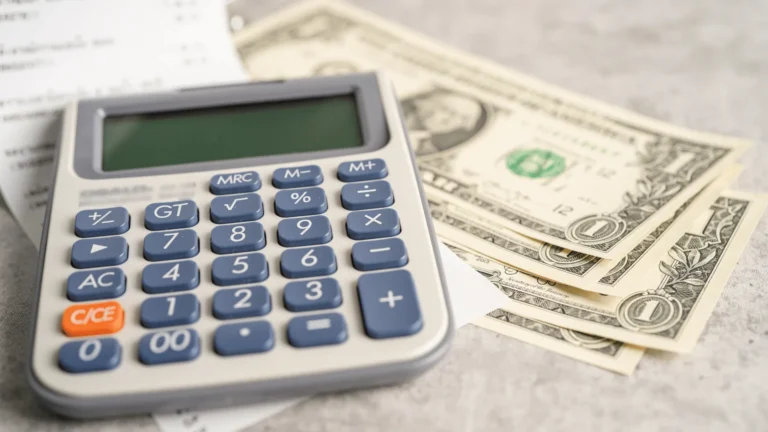Investing in real estate can be a powerful way to build wealth, but not every property is a smart investment. Understanding how to evaluate a property’s investment potential is crucial to making an informed decision and ensuring long-term profitability. Whether you’re looking for a rental property, a fix-and-flip opportunity, or a long-term appreciation play, this guide will walk you through the key factors to consider when assessing a real estate investment.
Key Factors to Consider When Evaluating an Investment Property
1. Location: The Foundation of Property Value
A property’s location is one of the most significant factors influencing its investment potential. Even the most well-maintained home will struggle to appreciate in value if it’s in an undesirable area. Consider the following when evaluating a location:
- Neighborhood Quality – Look for well-maintained homes, low crime rates, and a thriving local economy.
- School Districts – Homes in high-rated school districts tend to hold value better and attract long-term tenants.
- Proximity to Employment Centers – Properties near major job hubs often see higher demand and lower vacancy rates.
- Access to Amenities – Restaurants, shopping centers, parks, and entertainment options enhance desirability.
- Future Development Plans – Research city planning documents for upcoming infrastructure projects or business developments that could increase property value over time.
Investors should also study historical price trends in the area to understand whether property values are appreciating or stagnating.
2. Rental Market Strength and Demand
If you’re investing in a rental property, the local rental market’s strength is a crucial factor. Here’s how to assess it:
- Average Rent Prices – Compare rental rates for similar properties in the area to determine if the rental income will cover expenses.
- Vacancy Rates – High vacancy rates can indicate weak demand, which could make it difficult to secure tenants.
- Tenant Demographics – Identify your ideal renters, whether they are young professionals, families, or retirees, and assess whether the area caters to their needs.
- Short-Term vs. Long-Term Rentals – Some markets thrive on short-term rentals (Airbnb, VRBO), while others are more suited for long-term leases.
A good rule of thumb is the 1% Rule—a rental property should generate at least 1% of the purchase price in monthly rent. For example, a $300,000 property should rent for at least $3,000 per month to be considered a strong rental investment.
3. Property Condition and Renovation Costs
The condition of the property directly impacts your investment costs. Before purchasing, conduct a thorough inspection and estimate any necessary repairs or upgrades.
- Structural Integrity – Look for foundation issues, roofing problems, plumbing concerns, and electrical updates that may be needed.
- Age of Major Systems – HVAC, water heaters, and appliances should be evaluated to determine replacement costs.
- Cosmetic Upgrades – While aesthetics can be improved relatively easily, outdated kitchens and bathrooms may require costly renovations.
- Hidden Costs – Issues like outdated wiring, asbestos, or zoning restrictions could lead to unforeseen expenses.
If the home needs significant repairs, calculate rehabilitation costs to determine if the after-repair value (ARV) makes the investment worthwhile.
4. Property Appreciation Potential
While rental income is essential, long-term appreciation can make a property even more valuable. To gauge appreciation potential, consider:
- Historical Home Price Trends – Look at home value trends over the last 5–10 years to determine if prices have been steadily increasing.
- Supply and Demand – Areas with housing shortages tend to experience higher appreciation rates.
- Upcoming Developments – New schools, business parks, transit expansions, or entertainment districts can drive demand.
- Gentrification Trends – If an area is seeing an influx of young professionals, rising property values often follow.
Investors looking for appreciation should target emerging neighborhoods rather than markets that have already peaked.
5. Cash Flow and Return on Investment (ROI)
To determine a property’s profitability, calculate its cash flow and return on investment (ROI) before buying.
Cash Flow Calculation
Cash flow is the amount of money left after all expenses are deducted from rental income.
Formula:
Cash Flow = Gross Rental Income – Expenses
Example:
- Monthly Rent: $2,500
- Mortgage: $1,200
- Property Taxes: $250
- Insurance: $100
- Maintenance & Miscellaneous: $150
- Cash Flow: $800 per month
If cash flow is positive, the property may be a good investment.
Property ROI Calculation
ROI measures the efficiency of your investment based on how much you earn relative to your initial investment.
Formula:
ROI = (Annual Net Profit ÷ Total Investment) × 100%
Example:
- Annual Rental Income: $30,000
- Annual Expenses: $15,000
- Net Profit: $15,000
- Total Investment (Down Payment + Closing Costs + Repairs): $100,000
- ROI: (15,000 ÷ 100,000) × 100 = 15% ROI
A strong ROI for rental properties typically falls between 8% and 12%.
6. Market Liquidity and Exit Strategy
Real estate is not a liquid asset, meaning it takes time to sell. Consider these factors before buying:
- How Fast Can Homes Sell in the Area? – Check average days on market (DOM) for similar properties.
- Potential Buyer Pool – A property in a desirable location will always have demand.
- Multiple Exit Strategies – If you can’t sell, could you rent it out or refinance for better terms?
A good investment should have multiple exit strategies to minimize risk.
7. Financing Options and Costs
Your financing method impacts profitability, so evaluate:
- Mortgage Interest Rates – A higher rate means higher monthly costs, reducing cash flow.
- Loan Type – Conventional, FHA, or investment property loans all have different terms and requirements.
- Down Payment Requirements – Investment properties typically require 20–25% down.
- Closing Costs – Factor in lender fees, title insurance, and property taxes.
Getting pre-approved for financing can help investors secure better deals and move quickly in competitive markets.
Is This Property a Smart Investment?
Evaluating a property’s investment potential requires a detailed analysis of location, rental demand, condition, appreciation potential, cash flow, and financing options. A well-researched purchase can lead to consistent rental income, long-term appreciation, and financial security.
If you’re considering an investment property, work with an experienced real estate professional to guide you through the process. An agent can provide market insights, property valuations, and negotiation strategies to help you make the best decision.
Contact The Kink Team today for expert guidance on finding the right investment property in The Woodlands and beyond!


